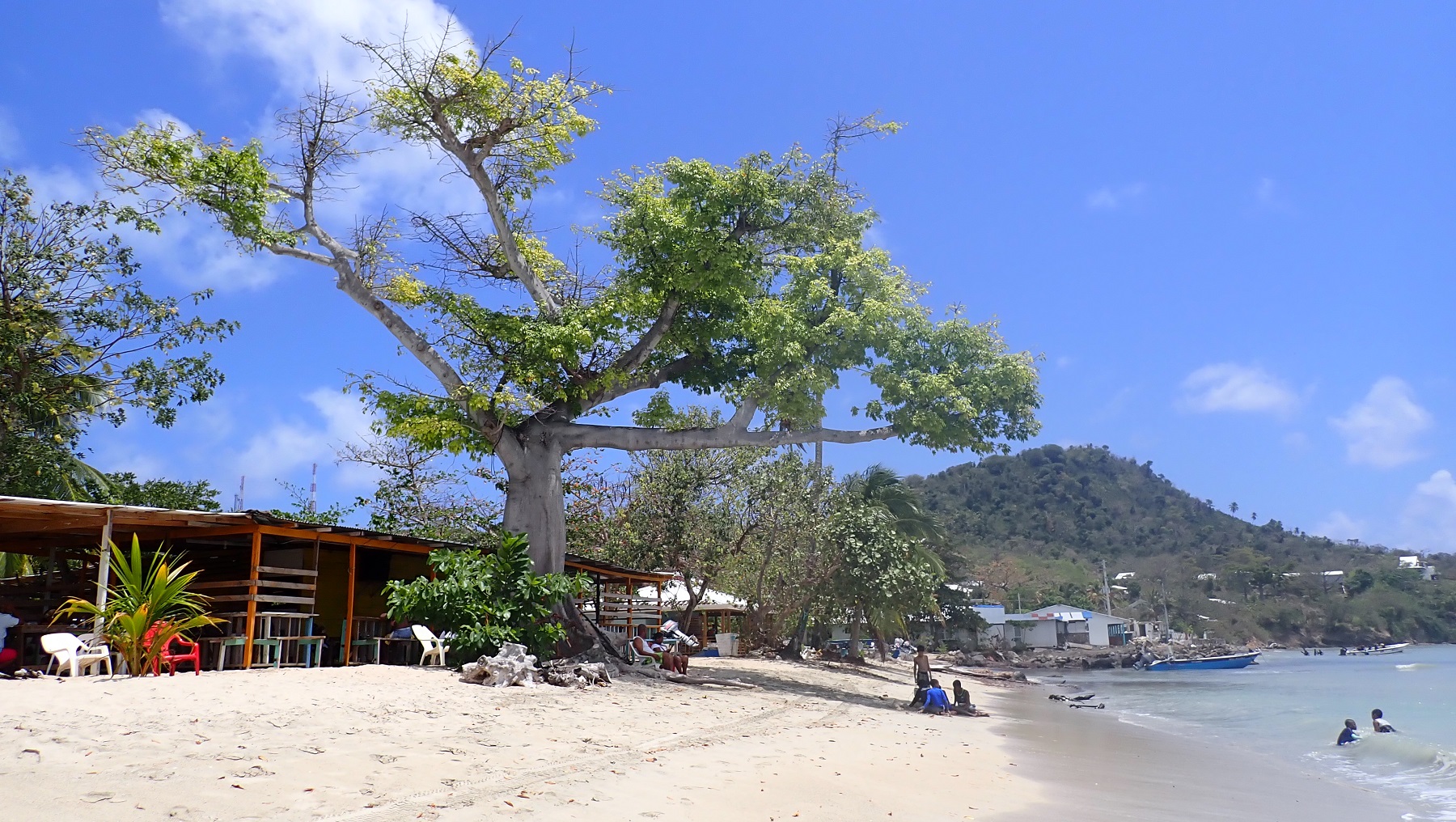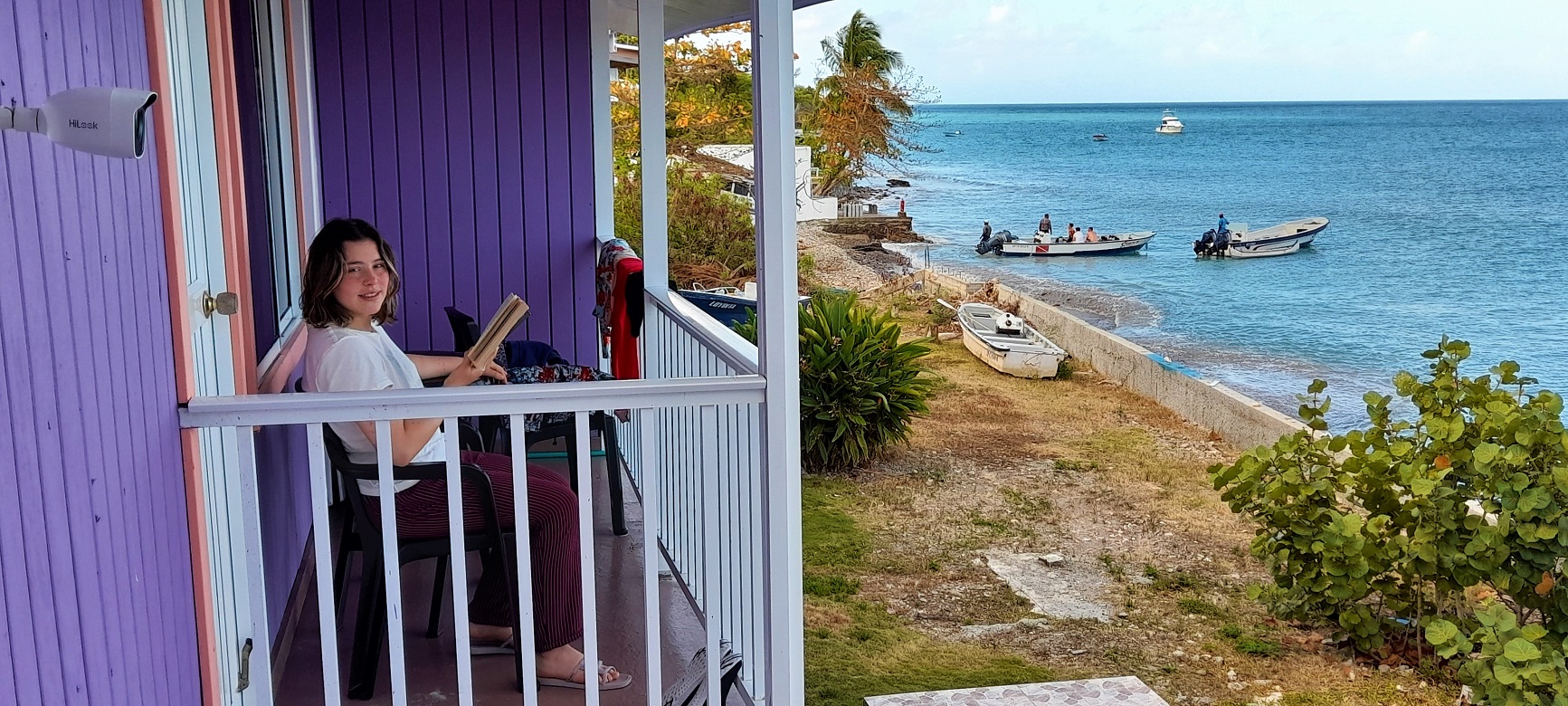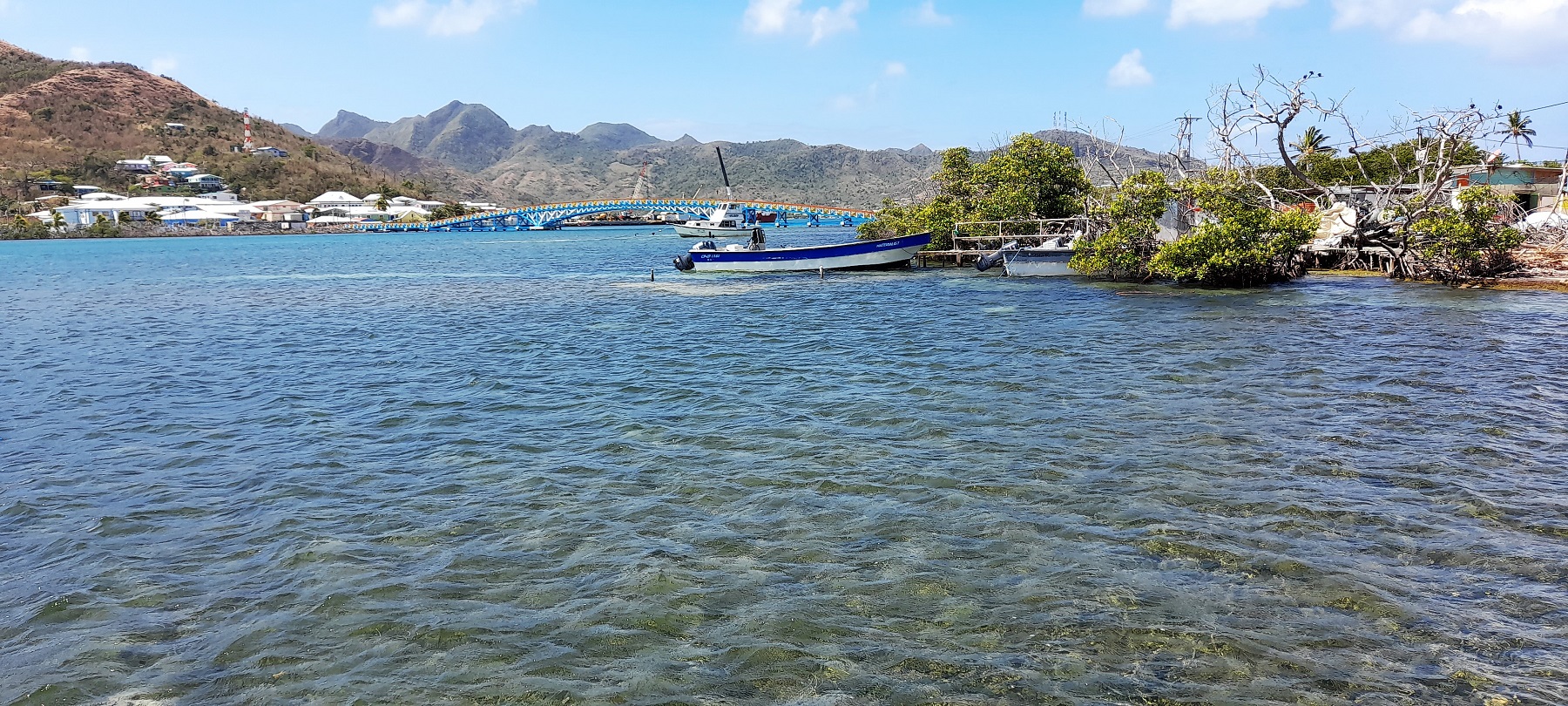Providencia Island: old caribbean charm
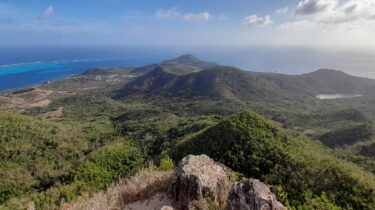
Providencia is Colombia’s hidden paradise, a volcanic island only 7 kilometers across surrounded by coral reefs and famous for its scuba diving and laid-back english-speaking communities. It’s far from mainland Colombia, but this remoteness – it’s a pinprick in the middle of a vast blue Caribbean sea – makes it a very special place to visit.
Posted April 2023
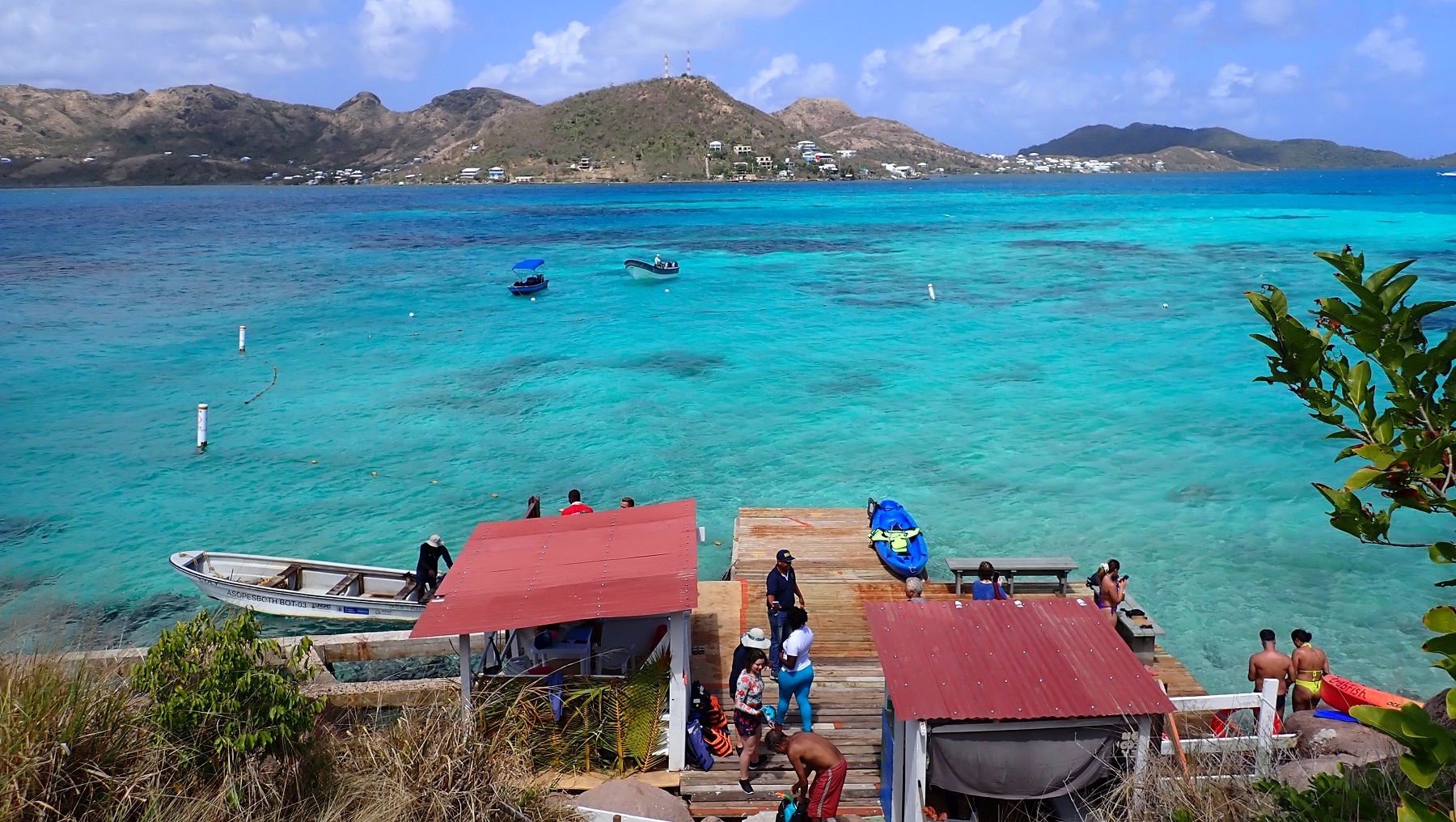
In fact, Providencia has a smaller sister, Santa Catalina Islet, joined by an iron footbridge. And 90kms south across open ocean is the larger San Andrés Island. The small archipelago is 900 kilometers from mainland Colombia, and closer to Nicaragua, causing a long-lasting territorial dispute over fishing and potential oil deposits. But for now they are firmly Colombian and joined by regular air routes to major Colombian cities. I’ll give some practical details on travel at the end of the post.
NOTE: I’ve put guideline prices in US$ because of fluctuating rates but the working currency on the island is COLOMBIAN PESOS.


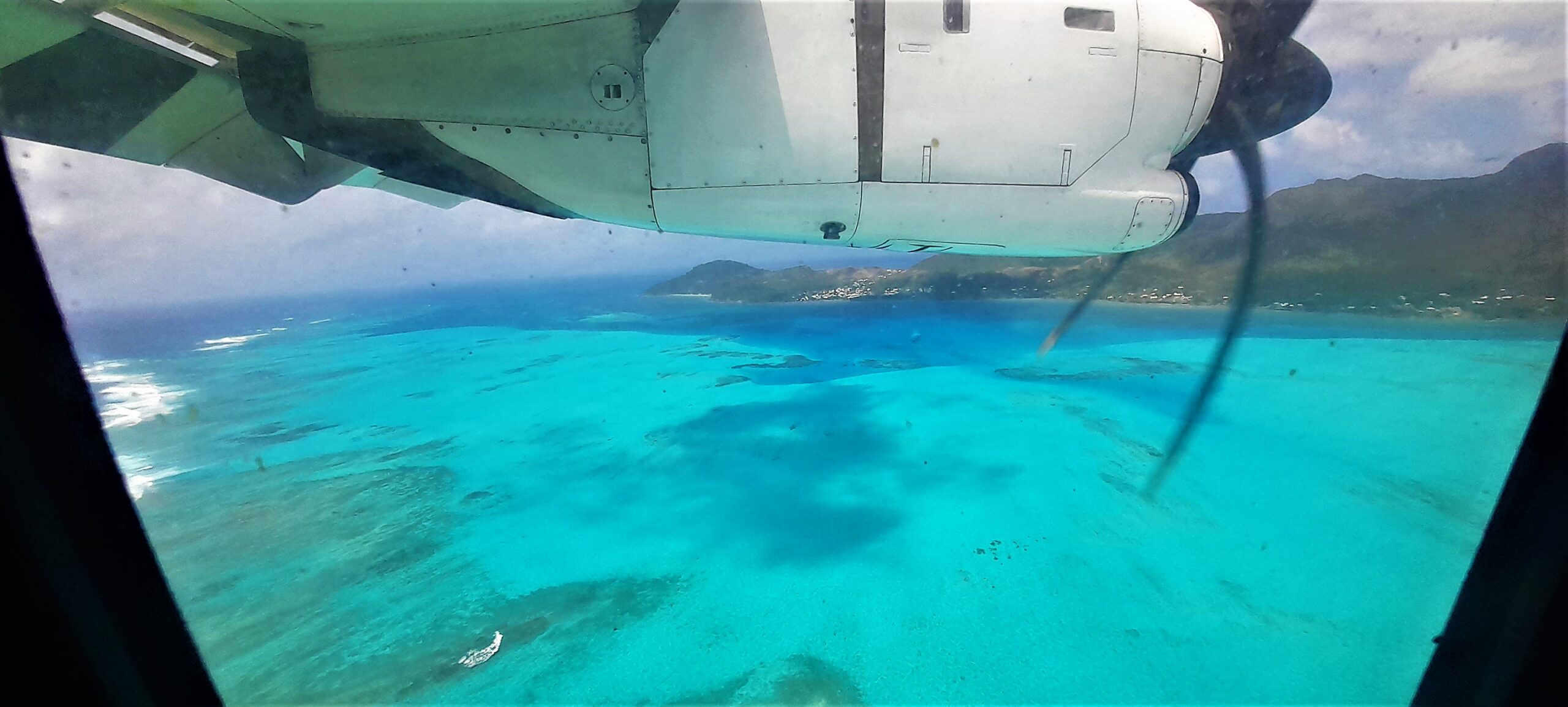
Providencia versus San Andrés?
Providencia forms part of the departamento Archipiélago de San Andrés, Providencia y Santa Catalina. The islands and 180,000 square kms of surrounding ocean and atolls have been declared a UN Biosphere Reserve, known as Sea Flower.
All visitors from Colombian mainland first pass through San Andrés by air (two hours from Bogotá) , then take a smaller plane to Providencia (there is also the option of a three hour voyage by catamaran, but the cost is around the same).
- San Andrés has 27 square kilometers with a large town and permanent population of 80,000.
- Providencia is 35% smallerwith only 5,000 residents, so much less populated.
- The archipelago receives 1.5 million visitors a year, mostly Colombian, but the majority stay in San Andrés.
- Providencia is a mountainous volcanic island with peaks to 550 metres.
- San Andres is a flatter coral island with a high point of 85 metres.
- Both have fringing coral reefs in their windy east coasts and calmer waters with deeper drop-offs on the east side.
- Both have excellent diving and snorkeling most of the year.
- Both populations are mix based on colonization by English puritans who brought slaves, Moskito Indians, and bucanneers and pirate crews creating an english and creole-speaking population. San Andrés has many more Colombian Spanish speakers from the mainland.

Culturally, Today, San Andrés is more ´Colombian´and is becoming a party island with mass tourism, large hotels, shopping centres similar to the Caribbean coast of mainland. A large (and partly illegal) population of mainland Colombians is also replacing local creole culture. Unbridled development has also created a resource crisis. As a major drug route for cocaine, San Andrés is now home to criminal gangs, though this does not normally affect visitors to the island.
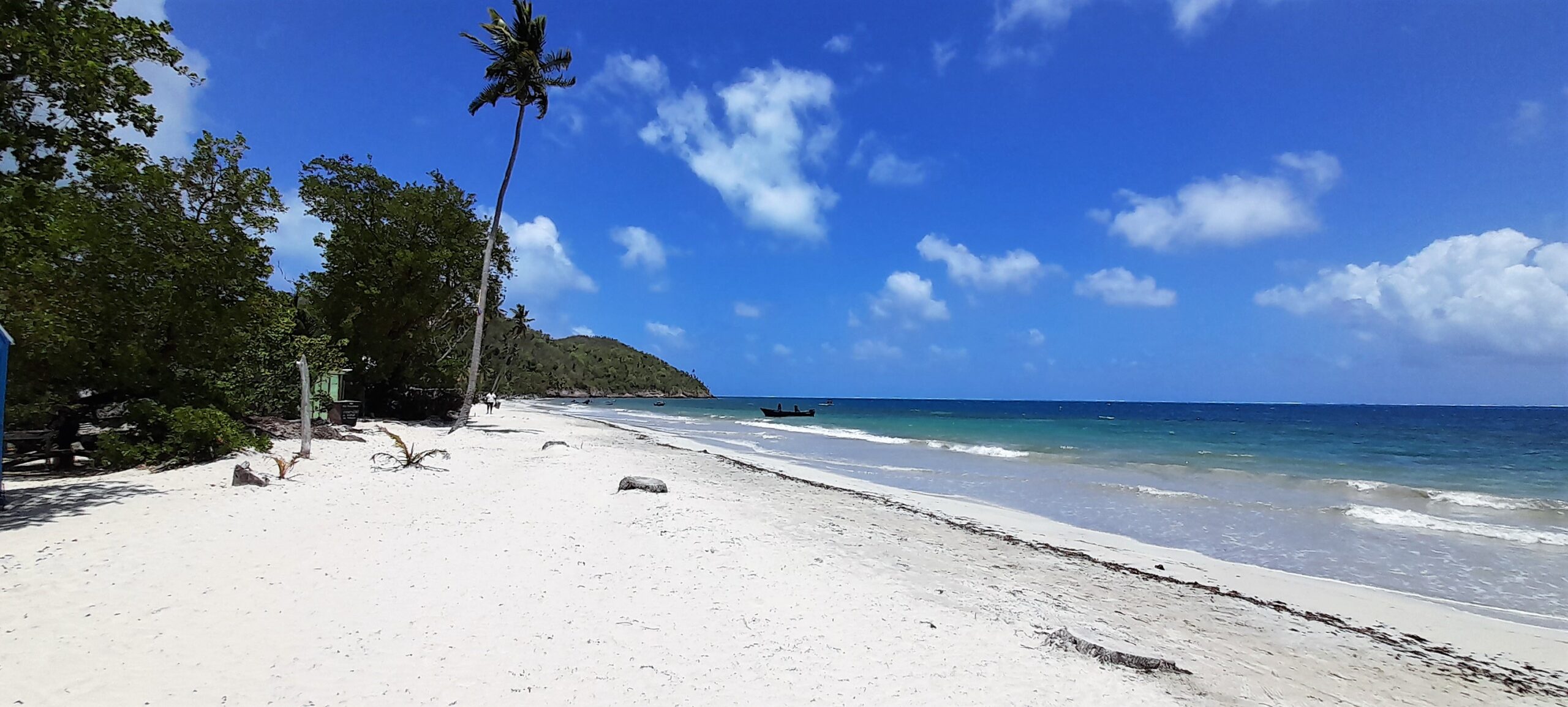
Meanwhile Providencia has limited visitors and is generally muy tranquilo. Construction of large hotels is banned, most of the island’s hostels and posadas are family-owned, and island culture is alive and well. But since all people and products in Providencia need to come by plane or boat from San Andrés, the costs here are higher. Of course you can also visit both San Andrés and Providencia. Both have their charms.
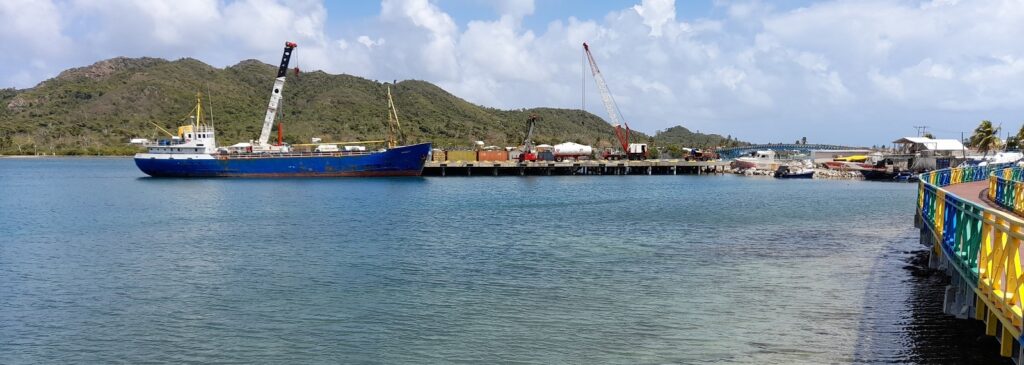
Has the island recovered from Hurricane Iota?
In November 2020 Providencia was knocked flat by Category 5 Hurricane Iota which parked itself over the island for a terrifying six hours. The huge storm left 98% of building damaged but only 4 deaths of an estimated population of 6,000. People survived often by hiding under their houses even as the roofs were ripped away. A rebuilding program with international support but not without controversy. Some houses are still derelict, and wreckage still dots the island, though many new houses are very neat with concrete walls, rainwater collection and solar panels.


The most visible damage remaining is the dead mangrove forests, which are being regenerated slowly and could take a decade to reform the natural barriers to protect from future storms. Generally though it’s true to say that Providencia has recovered from Iota and is open for business. The new hospital and airport are being finished in 2023.
Getting in deep
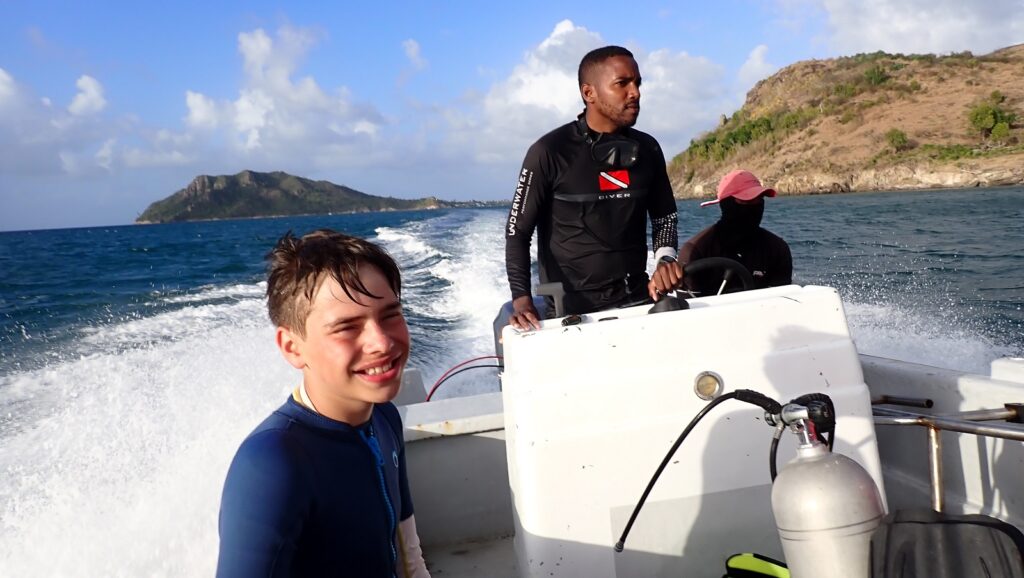
Providencia and adjoined Santa Catalina have a wide range of dive sites from blue holes to drop-offs to caves, and wrecks, not to mention great coral, fish, rays, turtles and sharks, and even an underwater Jesus popular with divers.
There are also PADI Dive schools dotted around the island, and most were operating in 2023, with gear for hire and properly kitted diving boats, and competent instructors.
We used Sonny Dive Shop in 2023, was very good.
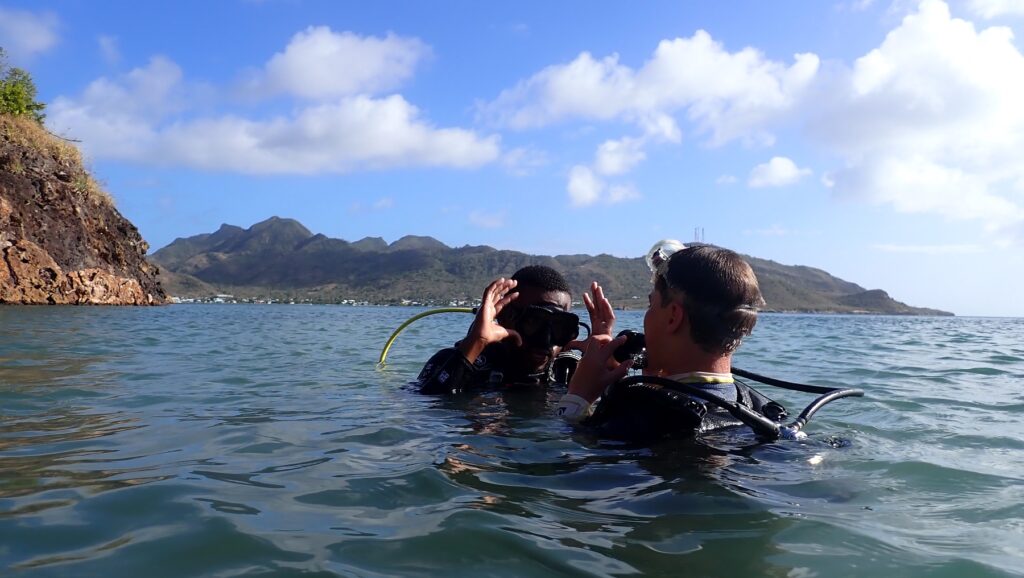
Padi Open Water certificate course, all included was US$300 for three days covering shallow water training and four open water dives.
Individual dives or twin dives from a boat cost around US$30 including all kit in 2023.
Diving is possible all year, though strong winds can restrict dive sites in the hurricane season (July – December) and dry season (January – February).
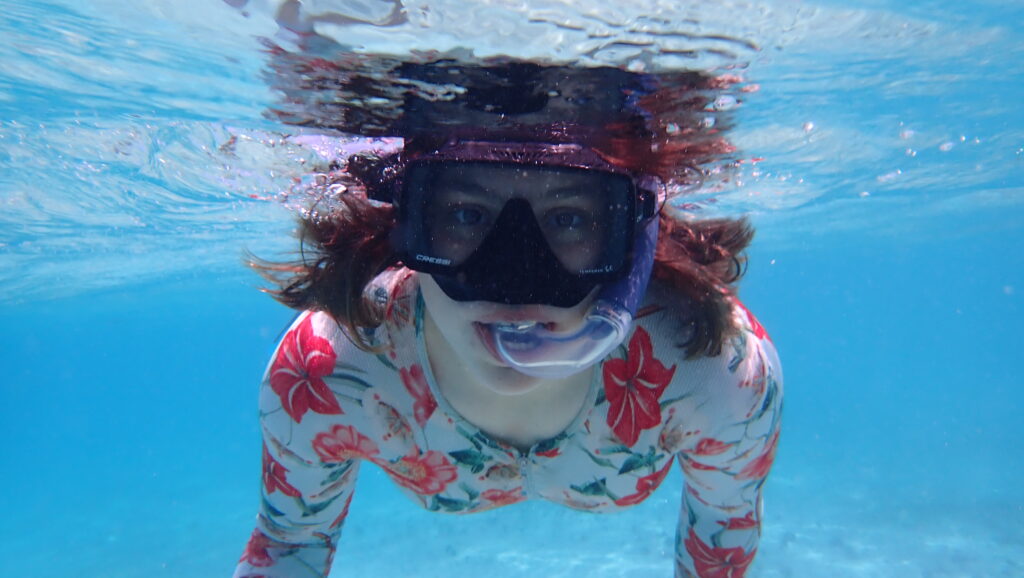
Snorkeling is also popular particularly in Mcbean National Park, Crab Key, and around Santa Catalina Island. Water is very clear off-shore, but can be murky after strong winds and swells.
I noticed that different dive shops tend to their own favourite sites or side of the island. To fully appreciate the different types of underwater environment you might need to dive with different operators.
Bring your own snorkeling gear, though you can join a round-the-island snorkeling trip by boat which stops at the best sites, in 2023 was US$25 per person.
SHARKS, A WARNING: You will see black-tip reef sharks on many dives around Providencia, which is fine as they are generally considered harmless to humans . Some dive operators attract the sharks by feeding them lionfish.
Lionfish are considered a predatory invasive species in the Caribbean and some divers spear them to reduce numbers and protect native fish stocks. But feeding them to sharks, as practiced by some dive tours is also being blamed for aggresive behaviour and a probable cause of a minor shark attack in 2019 in which a diver was mauled on the hand by a reef shark. This has led some divers to avoid using Felipe Diving which feeds the sharks. Most other dive operators only observe sharks.
More agressive shark species do pass by the islands and an Italian tourist was died after being bitten by a tiger shark in a popular snorkeling spot La Piscinita in San Andrés in 2022. This ‘bump and bite’ event (the shark just bit once but hit a major artery) was a highly unusual event for the islands. Two tiger sharks had been spotted in shallow water but an alert not issued.

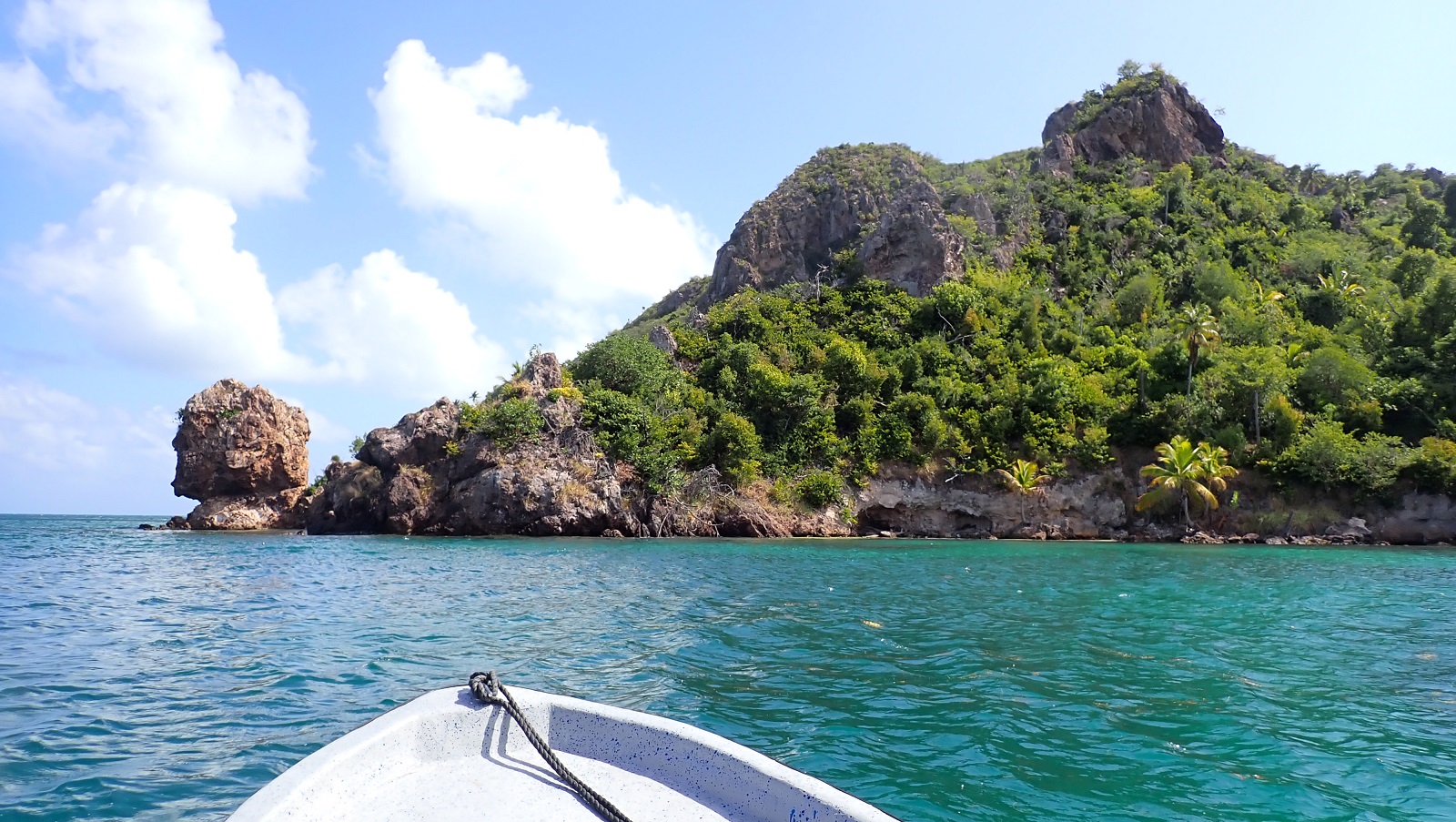

Into the interior…
Hiking to the The Peak is a must for the island, but comes with a hefty fee of US$16 per person to hire a ´guide´! The entrance to the trail is at Bottom House, the most southerly island community, and well signed. The walk is steep, ascending to 360 metres (or 550 metres, if you use the local government data) through dry tropical forest leading to a platform and rocky peak with 360 deg views of the whole island. The walk there and back is around three hours over a clear trail.

Locals guard the entrance and threaten and visitors trying to enter the trail without a guide. The guide I used was useless, knew very little of the island history and instead bored us with his very macho and misogynistic views, a very unpleasant trail companion. Despite the poor quality of my particular guide, there is zero justification for either a guide or a high price for this short walk, particularly when the cost is compared to other activities on the island.
This dire situation creates a bad impression of the island and deters many visitors from this beautiful walk. The island would gain more income from reducing the cost and allowing more people to enjoy. My advice is to do the walk and pay the fee, but make a clear condemnation of the high costs on social media, as this will pressure the island to charge realistic fees.

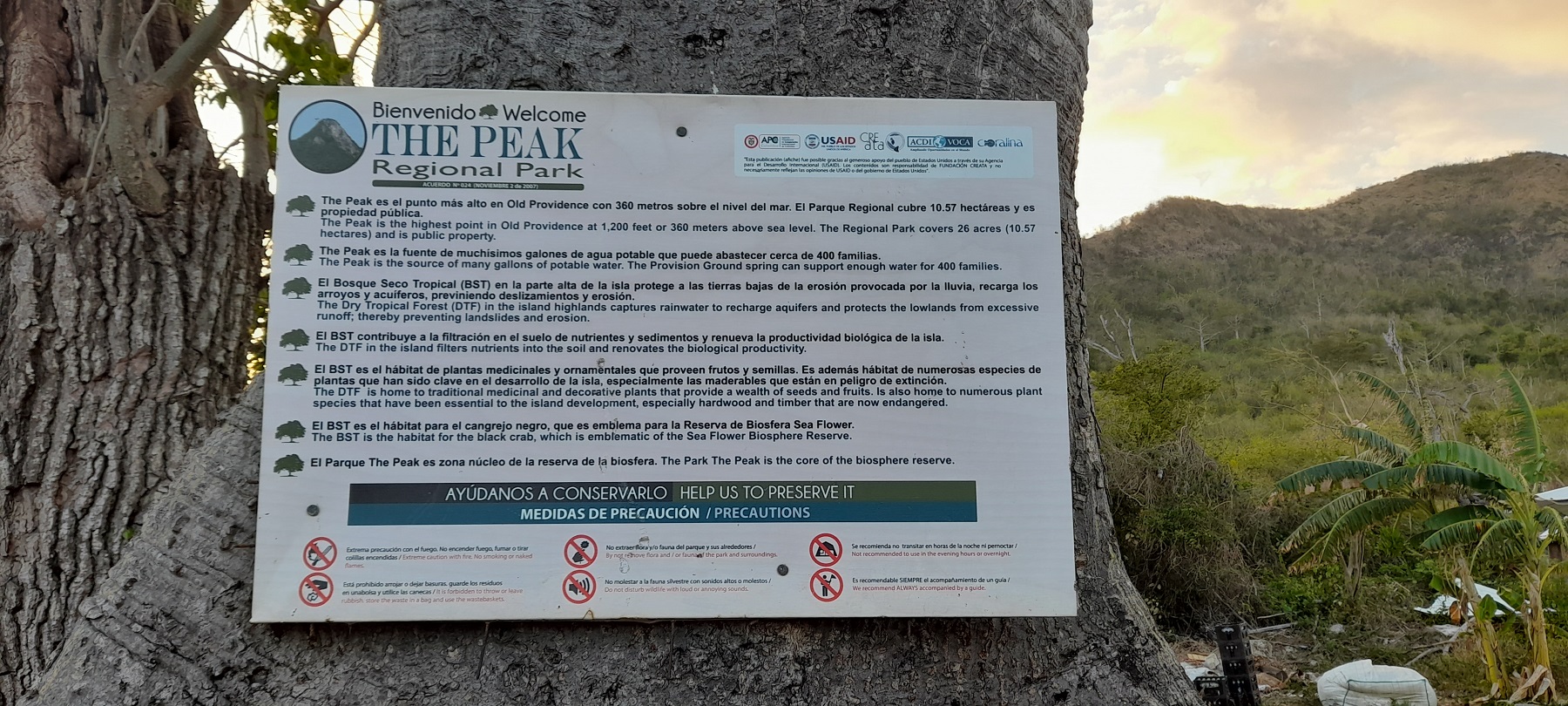
There is also a beautiful short walk from Freshwater to the dam set in the hills behind, it’s marked on maps, or you find the entrance just south of the Morgan Supermarket in Freshwater, it runs past the new waterworks up to a quarry and the dam. Sunrise and sunset are the best times.
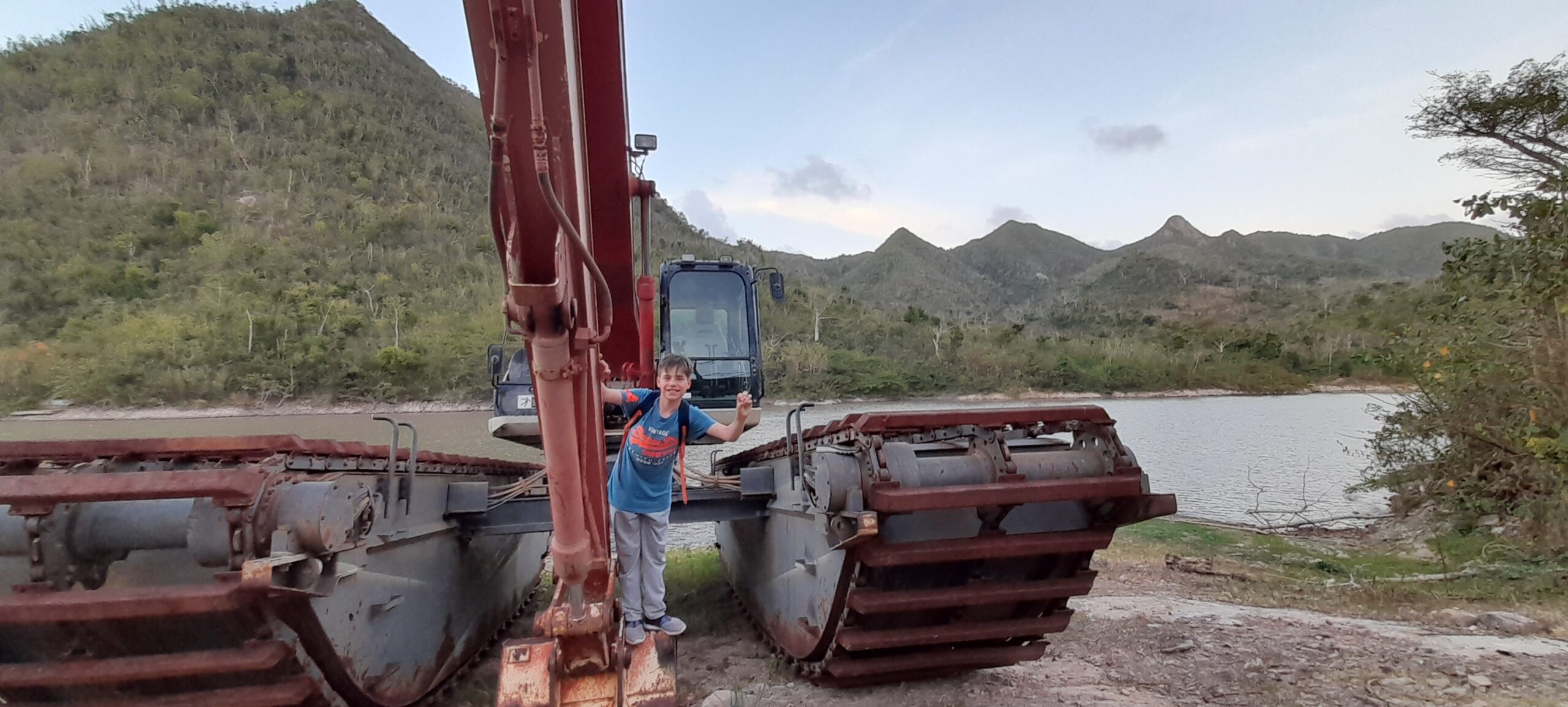
How to visit the Island: getting there
Flights to San Andrés from Colombia: Avianca and Latam fly daily to San Andres from Bogotá, Medellin and Cali, with several flights per week also from Cartagena. Note: in March 2023 two Colombian airlines, Viva and Ultra Air, went bust leaving passenger stranded all over Colombia including San Andrés.
International Direct Flights to San Andrés: Copa flies from Panama, American Airlines from Miami.
Travel San Andrés to Providencia: only SATENA flies this route, with several flights per day on 40-seat propeller planes. The other option is the inter-island Catamaran though the cost is the same as the plane and trip can be cancelled by rough seas.
You can get much cheaper flights and easier availability flying at off peak times. High season in the islands is national holidays ie December and January and Semana Santa, (which is the week before Easter Monday). Also puentes (bank holidays) will be busy. Any other time will be cheaper. You might want to avoid peak hurricane season (October November).
All visitors to the islands must pay a US$30 tourist tax which is paid in Colombian pesos at the airport you fly from (ie in Bogotá El Dorado airport) at a kiosk close to the check-in. Non-islanders can only spend up to 4 months a year in the islands. The tax covers all the islands. Keep the receipt as you will need to show it when arriving and leaving San Andrés, and on arrival and depature from Providencia.
HOW TO PAY….Note: many places only accept CASH in Colombian pesos, so check with the lodging how to pay. There are ATMs on the island and most supermarkets let you make cash withdrawals. Make sure you have a bank card that works with Colombian ATMs, or bring a lot of Colombian pesos in cash. Some dive shops let you pay with cards but check first.

How to visit the Island: getting around
You can easily walk to close destinations, like between Freshwater and Southwest Bay, and it’s quite safe, or hire a bicycle. Taxis are expensive (U$8 for even a short ride) and it can work out cheaper to hire a moto or buggy for the day (around US$40 for a 4-seat buggy for a whole day). There is minimal paperwork and a small cash deposit (US$25). In theory there is a small blue bus that drives around the island and is the cheapest option for transport, but it was not working the week we visited.
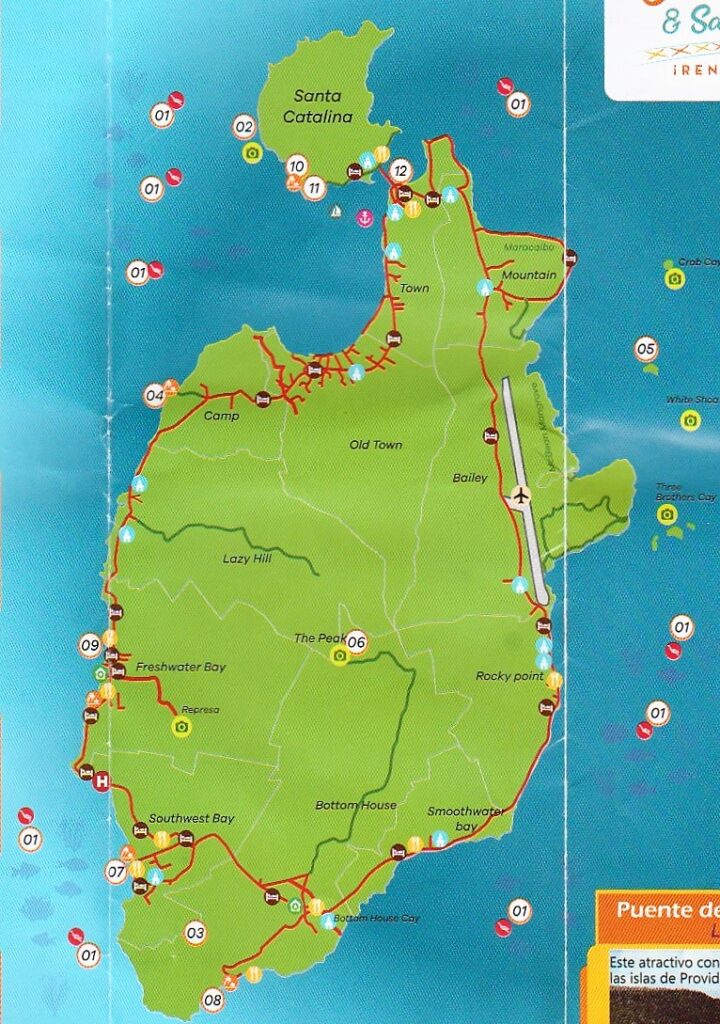
How to visit the Island: where to stay
There are many guest houses, hostels (posadas), cabins, small hotels and flats and houses to rent all over the island. Bookings.com has a good selection, and you can also check Google maps for smaller independent places (many do not like using Booking). Premium places to stay are Southwest Bay and Freshwater, with classier hotels and restaurants. Santa Catalina is also a good option with hostels a short walk over the bridge to Town. Old Town and Bottom House are more ´local´places to stay and more chance to mix with locals.
With remoter lodging, like around Rocky Point or Mountain, you might have problems to find nearby restaurants. There are flats and houses for hire here you can self-cater. On both visits I have stayed in Freshwater, which has several good restaurants, dive shops, a supermarket so everything is close by.
Remember owners all speak English, so its easy to contact and book direct by Whatsapp, you can find phone numbers from Google Maps. Some might ask for a deposit during high season.
Where to eat
Food is expensive on the island compared to the Colombian mainland, and the average restaurant meal is around US$12 in the main tourist areas (Freshwater, Southwest Bay) . However, this is still very good value compared to other Caribbean destinations, plus the the quality is excellent and portions huge so if your budget is tight you can survive on one large meal a day and snacks from the supermarket. We tried all the restuarants in Freshwater Bay and all were good value, with seafood, pizzas, chicken etc available. The seafood spaghetti at Miss Elma’s restuarant was the best meal I have eaten in Colombia! For local flavour try the rondon (run down) seafood stew cooked in a shack on Manzanillo Beach,

